ColorWhistle
Digital Web Design Agency India


Explore our Market-Fit Services
We ensure to establish websites with the latest trends as we believe that, products whose value satisfies the needs of the market and its potential customers can be efficiently successful.
Quick Links
- About Us – ColorWhistle
- Engagement Models
- Testimonials
- Case Studies
- Agency Services
- Web Development
- Web App Development
- Digital Marketing
- Travel Website Development Services Company
- Real Estate Website Development Services Company
- Education Website Development Services Company
- Healthcare Website Development Services Company
- Hotel and Restaurant Website Development Services
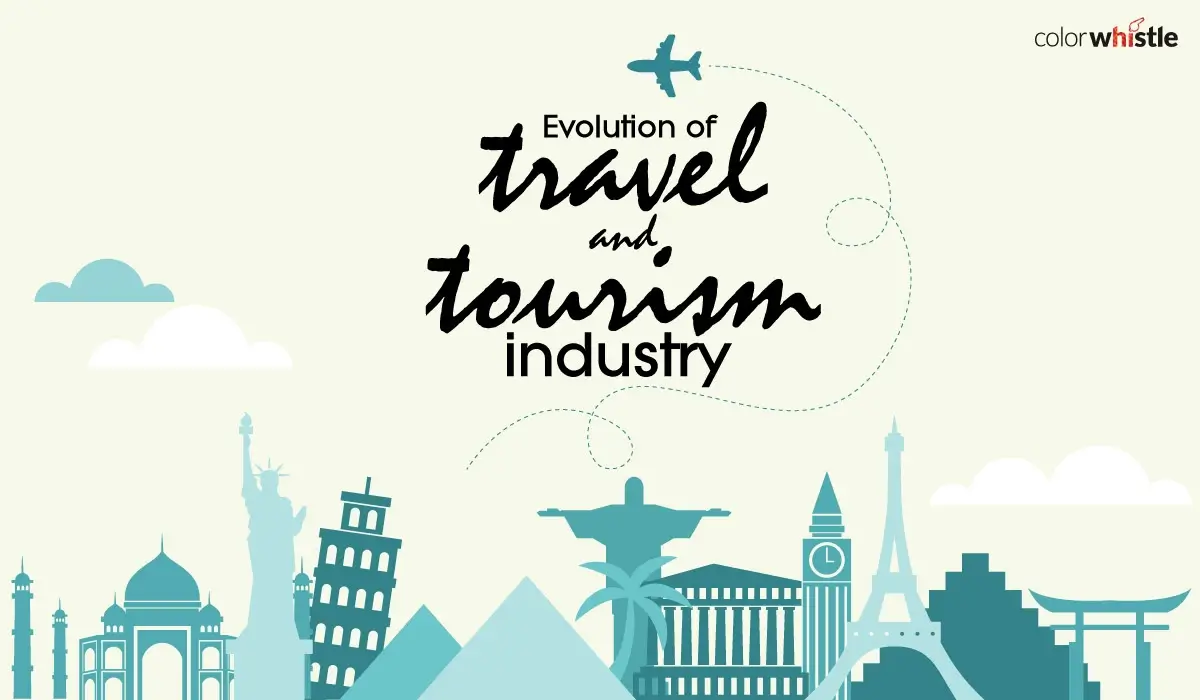
Category: Travel
Date: August 22, 2023
Evolution of Travel and Tourism Industry
Travel is one of the most important leisure activities in the world. Over the years, the travel industry has changed considerably. It is quite fascinating to see how travel agencies have evolved.
How far have we come? Where did it all start? Take a look at our ultimate travel evolution infographic to learn how the industry keeps moving forward, while evolving, expanding and showcasing more than any other industry.
England and France passed a legislation that required hotels and inns to keep guest registries
Cox & Kings, a travel company was founded
Industrial revolution resulted in expansion of rail infrastructure across Europe and North America
Thomas Cook, an international travel company was founded
The first German travel agency, Reiseburo Rominger was started in Stuttgart
Walter A. Brownell founded Brownell Tours and takes first 10 guests on an archeological tour of Switzerland
American Express Company introduced the world’s first Traveller’s Cheque
The first Indian travel company, Jeena Tours and Travels was established
Travel agencies became a commonplace with the development of commercial aviation
Avis Rent a Car, a car rental company was founded
It took 90 minutes/customer to complete a booking process. So, many airlines began to seriously look for automation tools
American Airlines installed the first automated booking system – the Reservisor
TCA became the first airline in the world to use a CRS with remote terminals
American Airlines switches to an automated airline reservation system known as SABRE
United Airlines introduced the computerized system Apollo based on IBM’s PARS
United Airlines began offering its Apollo system to travel agents
UK based companies launch the world’s first reservation system Travicom
Travicom handled 97% of UK airline business trade bookings
European airlines developed their own GDS system Amadeus
Galileo merged with Apollo system to book airline, hotel, train, cruise and car rental reservation
Navitaire, a technology service provider of the airline and rail industries was founded
Lonely Planet’s website is launched
Microsoft found its own travel booking website Expedia
Travelocity launched as a joint venture of Sabre Interactive and Worldview Systems Corp
HotBot metasearch engine was created
Jay S. Walker founded Priceline.com
Travelzoo, an internet company that publishes travel and leisure deals was founded
OpenTravel Alliance was founded to talk about the disparate systems in the global travel industry
Hotwire, a website that offers airline tickets, hotel rooms, vacation packages etc was established
Skyscanner, a travel fare aggregator website and travel metasearch engine was founded
Orbitz.com a travel fare aggregator website was founded
Couchsurfing international was formed as a New Hampshire nonprofit organization
TripAdvisor was acquired by InterActiveCorp (IAC)
Facebook was launched which inspired many to share their travel experience
IAC spun off its travel group of businesses under the Expedia, Inc. brand
Google Maps, a web mapping service developed by Google was founded
AirBedAndBreakfast (later renamed to Airbnb) was founded
Twitter inspires real-time messaging between travellers and travel brands
Some of the major GDSs are Amadeus, Travelport, Sabre, Shares, Abacus, Travelsky, Infini, Axess and Topas
Google buys IAT, a travel industry software
HotelTonight app was founded. It allowed users to find accommodations in America, Europe and Australia
Google Flights, an online flight booking search service was launched
Kayak Software Corporation was acquired by the Priceline Group
Sabre’s travel itinerary management app is the first travel app to integrate with a smartwatch
Travelocity was acquired by Expedia
WearGeared developed a Museum Glasses prototype application
Amadeus introduces the world’s first Virtual Reality travel search and booking experience
Amadeus launched their new portal Amadeus for developers
Heathrow Airport’s biometrics project is aiming to fully deploy facial recognition for departures
Evolution of travel industry infographics

Drive Conversions and Boost your Business with Expert Travel Website Development.
The travel industry has become a combination of DIY internet tools and travel management companies. Transportation innovations such as trains and airplanes have eliminated the problems and lowered travel costs. In short, it has become possible for travelers to go anywhere on the globe in less than 48 hours.
The market has split into a vast number of nice markets such as ecotourism, backpacking and historical tourism. There has been a handful of trips into orbit around Earth which is branded as ‘space tourism’ which is going to be an exciting chapter in the industry.
We ColorWhistle will keep updating this infographic as and when interesting things happen in the travel industry. Stay tuned!
In quest of the Perfect Travel Tech Solutions Buddy?
Be unrestricted to click the other trendy writes under this title that suits your needs the best!
- Rezdy Online Booking Software Review
- Computer Reservation System
- Online Travel Agencies
- Travel Meta Search Engine
- GDS Travel Agency Guide
- GDS OTA Travel Meta Searchengines
- Travel Aggregator Website
Related Posts

Enhancing Travel Marketing with AI-driven Customer Insights

How Predictive Maintenance Can Help the Travel Industry
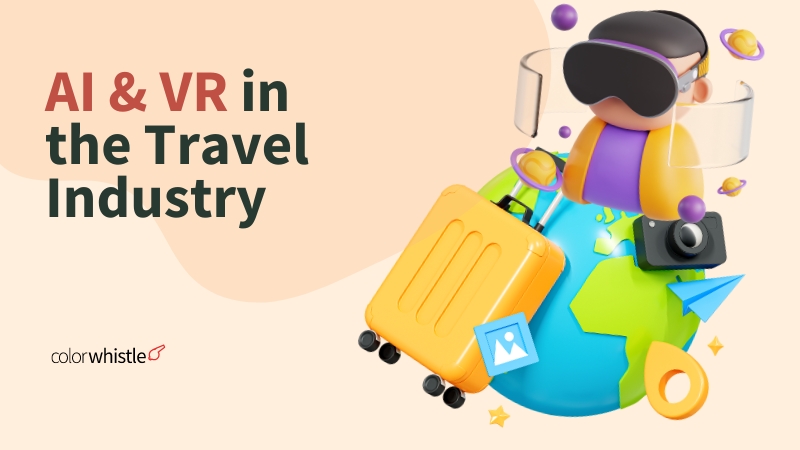
Exploring the World Through AI and VR in the Travel Industry
About the Author - Anjana
Anjana is a full-time Copywriter at ColorWhistle managing content-related projects. She writes about website technologies, digital marketing, and industries such as travel. Plus, she has an unhealthy addiction towards online marketing, watching crime shows, and chocolates.
View Our Services
Have an idea? Request a quote
Share This Blog
Your article is really awesome. I would love to read your more blogs. Keep posting.
Hi! Glad that you liked it. We write blogs very frequently. Do check back for more useful information!
Leave a Reply Cancel reply
Your email address will not be published. Required fields are marked *
Ready to get started?
Let’s craft your next digital story

Sure thing, leave us your details and one of our representatives will be happy to call you back!
Eg: John Doe
Eg: United States
Eg: [email protected]
More the details, speeder the process :)
Discussion Schedule: Ready for a GMeet Call Discussion Today / Tomorrow Available on a Phone Call Discussion Today / Tomorrow Send me a Calendar to Book The Meeting
"People want to travel": 4 sector leaders say that tourism will change and grow

The global travel and tourism industry's post-pandemic recovery is gaining pace as the world’s pent-up desire for travel rekindles. Image: Unsplash/Anete Lūsiņa
.chakra .wef-1c7l3mo{-webkit-transition:all 0.15s ease-out;transition:all 0.15s ease-out;cursor:pointer;-webkit-text-decoration:none;text-decoration:none;outline:none;color:inherit;}.chakra .wef-1c7l3mo:hover,.chakra .wef-1c7l3mo[data-hover]{-webkit-text-decoration:underline;text-decoration:underline;}.chakra .wef-1c7l3mo:focus,.chakra .wef-1c7l3mo[data-focus]{box-shadow:0 0 0 3px rgba(168,203,251,0.5);} Anthony Capuano
Shinya katanozaka, gilda perez-alvarado, stephen kaufer.
Listen to the article
- In 2020 alone, the travel and tourism industry lost $4.5 trillion in GDP and 62 million jobs - the road to recovery remains long.
- The World Economic Forum’s latest Travel & Tourism Development Index gives expert insights on how the sector will recover and grow.
- We asked four business leaders in the sector to reflect on the state of its recovery, lessons learned from the pandemic, and the conditions that are critical for the future success of travel and tourism businesses and destinations.
The global travel and tourism sector’s post-pandemic recovery is gaining pace as the world’s pent-up desire for travel rekindles. The difference in international tourist arrivals in January 2021 and a similar period in January 2022 was as much as the growth in all of 2021. However, with $4.5 trillion in GDP and 62 million jobs lost in 2020 alone, the road to recovery remains long.
A few factors will greatly determine how the sector performs. These include travel restrictions, vaccination rates and health security, changing market dynamics and consumer preferences, and the ability of businesses and destinations to adapt. At the same time, the sector will need to prepare for future shocks.
The TTDI benchmarks and measures “the set of factors and policies that enable the sustainable and resilient development of the T&T sector, which in turn contributes to the development of a country”. The TTDI is a direct evolution of the long-running Travel and Tourism Competitiveness Index (TTCI), with the change reflecting the index’s increased coverage of T&T development concepts, including sustainability and resilience impact on T&T growth and is designed to highlight the sector’s role in broader economic and social development as well as the need for T&T stakeholder collaboration to mitigate the impact of the pandemic, bolster the recovery and deal with future challenges and risks. Some of the most notable framework and methodology differences between the TTCI and TTDI include the additions of new pillars, including Non-Leisure Resources, Socioeconomic Resilience and Conditions, and T&T Demand Pressure and Impact. Please see the Technical notes and methodology. section to learn more about the index and the differences between the TTCI and TTDI.
The World Economic Forum's latest Travel & Tourism Development Index highlights many of these aspects, including the opportunity and need to rebuild the travel and tourism sector for the better by making it more inclusive, sustainable, and resilient. This will unleash its potential to drive future economic and social progress.
Within this context, we asked four business leaders in the sector to reflect on the state of its recovery, lessons learned from the pandemic, and the conditions that are critical for the future success of travel and tourism businesses and destinations.

Have you read?
Are you a 'bleisure' traveller, what is a ‘vaccine passport’ and will you need one the next time you travel, a travel boom is looming. but is the industry ready, how to follow davos 2022, “the way we live and work has changed because of the pandemic and the way we travel has changed as well”.
Tony Capuano, CEO, Marriott International
Despite the challenges created by the COVID-19 pandemic, the future looks bright for travel and tourism. Across the globe, people are already getting back on the road. Demand for travel is incredibly resilient and as vaccination rates have risen and restrictions eased, travel has rebounded quickly, often led by leisure.
The way many of us live and work has changed because of the pandemic and the way we travel has changed as well. New categories of travel have emerged. The rise of “bleisure” travel is one example – combining elements of business and leisure travel into a single trip. Newly flexible work arrangements, including the opportunity for many knowledge workers to work remotely, have created opportunities for extended travel, not limited by a Monday to Friday “9 to 5” workweek in the office.
To capitalize on this renewed and growing demand for new travel experiences, industry must join governments and policymakers to ensure that the right conditions are in place to welcome travellers as they prepare to get back on the road again, particularly those who cross international borders. Thus far, much of the recovery has been led by domestic and leisure travel. The incremental recovery of business and international travel, however, will be significant for the broader industry and the millions who make their livelihoods through travel and tourism.
Looking ahead to future challenges to the sector, be they public health conditions, international crises, or climate impacts, global coordination will be the essential component in tackling difficult circumstances head-on. International agreement on common – or at least compatible – standards and decision-making frameworks around global travel is key. Leveraging existing organizations and processes to achieve consensus as challenges emerge will help reduce risk and improve collaboration while keeping borders open.
“The travel and tourism sector will not be able to survive unless it adapts to the virtual market and sustainability conscience travellers”
Shinya Katanozaka, Representative Director, Chairman, ANA Holdings Inc.
At a time when people’s movements are still being restricted by the pandemic, there is a strong, renewed sense that people want to travel and that they want to go places for business and leisure.
In that respect, the biggest change has been in the very concept of “travel.”
A prime example is the rapid expansion of the market for “virtual travel.” This trend has been accelerated not only by advances in digital technologies, but also by the protracted pandemic. The travel and tourism sector will not be able to survive unless it adapts to this new market.
However, this is not as simple as a shift from “real” to “virtual.” Virtual experiences will flow back into a rediscovery of the value of real experiences. And beyond that, to a hunger for real experiences with clearer and more diverse purposes. The hope is that this meeting of virtual and actual will bring balance and synergy the industry.
The pandemic has also seen the emergence of the “sustainability-conscious” traveller, which means that the aviation industry and others are now facing the challenge of adding decarbonization to their value proposition. This trend will force a re-examination of what travel itself should look like and how sustainable practices can be incorporated and communicated. Addressing this challenge will also require stronger collaboration across the entire industry. We believe that this will play an important role in the industry’s revitalization as it recovers from the pandemic.
How is the World Economic Forum promoting sustainable and inclusive mobility systems?
The World Economic Forum’s Platform for Shaping the Future of Mobility works across four industries: aerospace and drones; automotive and new mobility; aviation travel and tourism; and supply chain and transport. It aims to ensure that the future of mobility is safe, clean, and inclusive.
- Through the Clean Skies for Tomorrow Coalition , more than 100 companies are working together to power global aviation with 10% sustainable aviation fuel by 2030.
- In collaboration with UNICEF, the Forum developed a charter with leading shipping, airlines and logistics to support COVAX in delivering more than 1 billion COVID-19 vaccines to vulnerable communities worldwide.
- The Road Freight Zero Project and P4G-Getting to Zero Coalition have led to outcomes demonstrating the rationale, costs and opportunities for accelerating the transition to zero emission freight.
- The Medicine from the Sky initiative is using drones to deliver vaccines and medicine to remote areas in India, completing over 300 successful trials.
- The Forum’s Target True Zero initiative is working to accelerate the deployment and scaling of zero emission aviation, leveraging electric and hydrogen flight technologies.
- In collaboration with the City of Los Angeles, Federal Aviation Administration, and NASA, the Forum developed the Principles of the Urban Sky to help adopt Urban Air Mobility in cities worldwide.
- The Forum led the development of the Space Sustainability Rating to incentivize and promote a more safe and sustainable approach to space mission management and debris mitigation in orbit.
- The Circular Cars Initiative is informing the automotive circularity policy agenda, following the endorsement from European Commission and Zero Emission Vehicle Transition Council countries, and is now invited to support China’s policy roadmap.
- The Moving India network is working with policymakers to advance electric vehicle manufacturing policies, ignite adoption of zero emission road freight vehicles, and finance the transition.
- The Urban Mobility Scorecards initiative – led by the Forum’s Global New Mobility Coalition – is bringing together mobility operators and cities to benchmark the transition to sustainable urban mobility systems.
Contact us for more information on how to get involved.
“The tourism industry must advocate for better protection of small businesses”
Gilda Perez-Alvarado, Global CEO, JLL Hotels & Hospitality
In the next few years, I think sustainability practices will become more prevalent as travellers become both more aware and interested in what countries, destinations and regions are doing in the sustainability space. Both core environmental pieces, such as water and air, and a general approach to sustainability are going to be important.
Additionally, I think conservation becomes more important in terms of how destinations and countries explain what they are doing, as the importance of climate change and natural resources are going to be critical and become top of mind for travellers.
The second part to this is we may see more interest in outdoor events going forward because it creates that sort of natural social distancing, if you will, or that natural safety piece. Doing outdoor activities such as outdoor dining, hiking and festivals may be a more appealing alternative to overcrowded events and spaces.
A lot of lessons were learned over the last few years, but one of the biggest ones was the importance of small business. As an industry, we must protect small business better. We need to have programmes outlined that successfully help small businesses get through challenging times.
Unfortunately, during the pandemic, many small businesses shut down and may never return. Small businesses are important to the travel and tourism sector because they bring uniqueness to destinations. People don’t travel to visit the same places they could visit at home; they prefer unique experiences that are only offered by specific businesses. If you were to remove all the small businesses from a destination, it would be a very different experience.
“Data shows that the majority of travellers want to explore destinations in a more immersive and experiential way”
Steve Kaufer, Co-Founder & CEO, Tripadvisor
We’re on the verge of a travel renaissance. The pandemic might have interrupted the global travel experience, but people are slowly coming out of the bubble. Businesses need to acknowledge the continued desire to feel safe when travelling. A Tripadvisor survey revealed that three-quarters (76%) of travellers will still make destination choices based on low COVID-19 infection rates.
As such, efforts to showcase how businesses care for travellers - be it by deep cleaning their properties or making items like hand sanitizer readily available - need to be ingrained within tourism operations moving forward.
But travel will also evolve in other ways, and as an industry, we need to be prepared to think digitally, and reimagine our use of physical space.
Hotels will become dynamic meeting places for teams to bond in our new hybrid work style. Lodgings near major corporate headquarters will benefit from an influx of bookings from employees convening for longer periods. They will also make way for the “bleisure” traveller who mixes business trips with leisure. Hotels in unique locales will become feasible workspaces. Employers should prepare for their workers to tag on a few extra days to get some rest and relaxation after on-location company gatherings.
Beyond the pandemic, travellers will also want to explore the world differently, see new places and do new things. Our data reveals that the majority want to explore destinations in a more immersive and experiential way, and to feel more connected to the history and culture. While seeing the top of the Empire State building has been a typical excursion for tourists in New York city, visitors will become more drawn to intimate activities like taking a cooking class in Brooklyn with a family of pizza makers who go back generations. This will undoubtedly be a significant area of growth in the travel and tourism industry.
Governments would be smart to plan as well, and to consider an international playbook that helps prepare us for the next public health crisis, inclusive of universal vaccine passports and policies that get us through borders faster.
Understanding these key trends - the ongoing need to feel safe and the growing desire to travel differently - and planning for the next crisis will be essential for governments, destinations, and tourism businesses to succeed in the efforts to keep the world travelling.

By Bastian Herre, Veronika Samborska and Max Roser
Tourism has massively increased in recent decades. Aviation has opened up travel from domestic to international. Before the COVID-19 pandemic, the number of international visits had more than doubled since 2000.
Tourism can be important for both the travelers and the people in the countries they visit.
For visitors, traveling can increase their understanding of and appreciation for people in other countries and their cultures.
And in many countries, many people rely on tourism for their income. In some, it is one of the largest industries.
But tourism also has externalities: it contributes to global carbon emissions and can encroach on local environments and cultures.
On this page, you can find data and visualizations on the history and current state of tourism across the world.
Interactive Charts on Tourism
Cite this work.
Our articles and data visualizations rely on work from many different people and organizations. When citing this topic page, please also cite the underlying data sources. This topic page can be cited as:
BibTeX citation
Reuse this work freely
All visualizations, data, and code produced by Our World in Data are completely open access under the Creative Commons BY license . You have the permission to use, distribute, and reproduce these in any medium, provided the source and authors are credited.
The data produced by third parties and made available by Our World in Data is subject to the license terms from the original third-party authors. We will always indicate the original source of the data in our documentation, so you should always check the license of any such third-party data before use and redistribution.
All of our charts can be embedded in any site.
Our World in Data is free and accessible for everyone.
Help us do this work by making a donation.
Make it better, not just safer: The opportunity to reinvent travel
We remember the first time we jumped in a cold lake on a hot summer day with our siblings. The first time we ate street food walking the streets of a new country with college roommates. We even remember the first business trip we took—straight out of college, and too nervous to enjoy the ride.
This desire to build memories, to connect with people, and to see new places drove 1.4 billion of us to travel internationally in 2019. 1 International tourism highlights: 2019 edition, World Tourism Organization, 2019, e-unwto.org. Creating safer travel experiences is now paramount to protect this privilege.
Now is clearly a moment of crisis for the travel industry. Available seat miles on US airlines were down 71 percent in April 2020 from the previous year. 2 Andrew Curley, Alex Dichter, Vik Krishnan, Robin Riedel, and Steve Saxon, “ Coronavirus: Airlines brace for severe turbulence ,” April 2020. Globally, hotels are at 29 percent occupancy, compared with 72 percent over the same period in 2019. 3 STR occupancy data for May 17 through May 23, 2020. However, we are seeing green shoots of demand in areas that are opening up, highlighting an enduring desire to travel; our April survey of Chinese leisure travelers shows that many people are already planning their next trip. 4 Xiang Mi, “Big data from Tongcheng: The average room rate of domestic hotels during the ‘May Day’ rose by about 42% year-on-year,” DoNews , April 27, 2020, donews.com; Kay Chen, Will Enger, Jackey Yu, and Cherie Zhang, “ Hitting the road again: How Chinese travelers are thinking about their first trip after COVID-19 ,” May 2020.
But the future of the travel industry will depend on more than just travelers’ pent-up demand. For some, the romance that travel used to inspire was already wearing thin even before the crisis. We spoke to people across multiple geographies who have traveled in the last two months, 5 Recent traveler interviews conducted May 4 to May 15, 2020, with travelers aged 25–55 from China, Germany, Sweden, and the United States. and the one constant across their experiences was added stress—whether due to limited entry points, multiple new checkpoints, or fellow travelers’ inconsistent compliance with published safety measures.
Safety must be the first priority. Wherever possible, however, intensified health and hygiene protocols should be implemented in ways that avoid making journeys more difficult in the aftermath of the pandemic—for example, the way that travel became logistically more complex after 9/11 because of additional security measures. The imperative to move fast has often meant unilateral decision making, rather than solutions developed through quick, iterative feedback. Any further advance of cold or sterile experiences as a result of the (appropriate) pursuit of safety could radically shift behaviors toward simpler experiences, such as choosing to drive instead fly, or could even dampen the overall recovery.
Travel companies need to excite and attract customers as well as reassure them. To achieve this, leaders should focus on making travel better—not just safer—which means giving travelers more control, offering greater authenticity and personalization, and taking a customer-centric, agile approach.
Moving beyond table-stakes safety initiatives
Many travel companies have already announced a series of health and hygiene measures, often promoted with well-known cleaning brands or health experts. But not all of these measures will survive in their current forms: some won’t be effective, some won’t resonate with travelers, and some will prove impossible to deliver consistently and at scale. Constant one-upmanship on cleanliness, though well-intentioned, can be problematic for two reasons. First, each new announcement resets the bar on hygiene standards, leaving industry players scrambling to keep up with initiatives—whether or not they actually improve employee or traveler safety. Second, the travelers we interviewed told us that the fragmentation across new cleanliness programs creates anxiety and confusion about what works and who to trust to keep them safe. If one airport claims that its security process is safer than another’s, for example, why would travelers trust that any airport is safe? Travelers should have confidence in the whole system, rather than be anxious about pieces within it (Exhibit 1).
In fact, a focus on health and hygiene only scratches the surface of the changes that are necessary in the aftermath of the current crisis. Companies can consider three types of interventions to reinvent and reinvigorate travel over the coming years (Exhibit 2).
In addition to table-stakes safety initiatives, a second category of actions can reassure and comfort the public. Brands might differentiate themselves and re-engage their travelers with visible, communications-based cues—such as notifications about the health status of the destination city and personalized notes about the importance of testing and other safety measures. Finally, companies need to move beyond reassuring customers to exciting them, perhaps by looking for opportunities to create exceptional travel experiences.
Making travel better, not just safer
As travel companies redesign their traveler experiences to address risks and anxieties related to COVID-19, they should remember that the pain points and trends that existed before the crisis—such as the shift toward a more digital and personalized journey, and an increased emphasis on wellness and sustainability—have not gone away (Exhibit 3). Airports, for example, are going to have to rethink customer experience in the coming years, but many already understood the importance of improved service and contactless operations. 6 For more, read Melissa Dalrymple and Kevin Dolan, “ Beyond contactless operations: Human-centered customer experience ,” May 2020; “ How customer experience takes flight at the Orlando airport ,” February 2017.
Another example is the high-anxiety purchase journey for flights and lodging, meaningful purchases that often cannot be returned. Simplifying these experiences represents a significant opportunity: before the crisis, we estimated (in partnership with the International Air Transport Association) that the value at stake in making airline ticket retail easier might be $40 billion 7 Riccardo Boin, Alex Cosmas, and Nina Wittkamp, “ Airline retailing: The value at stake ,” November 2019. —equivalent to 4 percent of 2019 revenues—by 2030.
Many initiatives can make the travel experience simultaneously better and safer. Housekeeping services, for instance, will need to adjust for safety concerns, but revised protocols can also reduce environmental impact (such as through less-frequent laundering of sheets during each stay), decrease cost, and give guests more flexibility (by letting them choose their own housekeeping schedule).

Companies will also need to look outside the industry to understand changing consumer expectations. Travelers develop preferences and needs based on their interactions with all companies, not only when they’re on airplanes or in hotels. Companies should consider, for example, how travelers interact with grocery-store clerks, food-delivery persons, or virtual-shopping experts.

Admittedly, the current economic context makes it difficult to expect companies to do more. Indeed, not every good idea will be economically feasible, and there’s little slack in the system for big launches that fail. The good news is that some of the necessary changes will require no significant capital outlay but instead a change in mindset toward customer experience–centric behaviors. Where investment is needed, developing a clear perspective on which actions to prioritize will require balancing of the travelers’ needs with consistent delivery (perhaps with a smaller organization) and the business case’s viability.
Travel companies should bear three principles in mind when designing new protocols and experiences.
Give customers more choice and control
Companies should empower customers to build their own itinerary using smarter, connected digital tools and make it easier for them to modify or cancel their plans. In addition, companies must recognize that the factors that promote customer loyalty may now have shifted; near-term uncertainty may mean, for example, that the ability to cancel a reservation matters more than brand choice or price. The moments that matter might mean more digital than ever and in new places within the customer journey. Solutions and policies that provide choice and control will help to build the trust and confidence necessary to get travelers back on the road and in the air.
Be human and genuine, and personalize the experience
Before the crisis, personalized and unique experiences constituted a dominant trend. Boutique hotels, for instance, were the fastest-growing hotel segment in the United States, with supply increasing 10.6 percent between 2018 and 2019, compared with an overall hotel supply growth of 2.0 percent. 8 Kim Bardoul, “Boutiques can give hoteliers rebound opportunities,” Hotel News Now , April 22, 2020, hotelnewsnow.com. Travelers are drawn to those hotels that put a human face on the institution, that can combine the high standards and consistency of a hotel chain with the personality and privacy of a vacation rental. Major hotel chains have recognized these changing preferences and launched new “soft brands” that serve as a collection of boutique hotels.
Travel companies now have an opportunity to take this personalization a step further, but—in a world where formerly welcoming smiles are behind masks—they will need to find new ways to connect. We have heard hotel staff calling first responders who were quarantining in their hotels to check on them and including notes of encouragement in their bagged lunches, and of airline pilots addressing passengers pre-flight to reassure them and answer any questions about safety.
Getting this right is a balance: mass emails from the CEO can only go so far, and consumers are already reporting fatigue around “we’re all in this together” messaging that is beginning to ring hollow. According to a recent Adobe study, brand marketers are 20 percent more likely than consumers to believe that consumers want to see ads on companies’ COVID-19 responses. 9 Adobe Blog , “Navigating advertising strategy during the COVID storm,” blog entry by Keith Eadie, May 21, 2020, theblog.adobe.com. The bar for authenticity in brand communication and behavior across channels (including in person) must remain high. As such, communication should be focused on what a company is doing for the traveler, rather than delivering superficial platitudes.

Frontline staff can also be powerful messengers and are a great source of insight for improvements or opportunities that a home office will not spot as quickly. Travel workers have been through a lot since the start of the crisis, both professionally and personally, and maintaining an open dialogue around their experiences—and acting upon their feedback—will be vital to ensuring that they feel safe and confident.
To move forward, the industry can actually look backward and take inspiration from a time when airline travel was exciting and new, and travel companies went out of their way to solve for traveler needs rather than just optimizing against the competition.
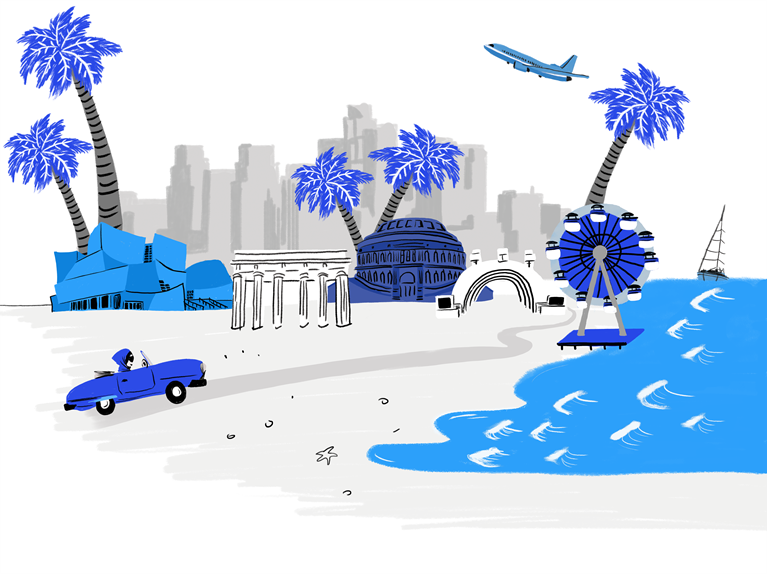

Listen to customers, and take an agile approach
We have found that companies that surpass their peers in customer-experience design tend to share a set of features 10 Benedict Sheppard, Hugo Sarrazin, Garen Kouyoumjian, and Fabricio Dore, “ The business value of design ,” McKinsey Quarterly , October 2018. : they have agile, cross-functional teams that develop and iterate with end users and deliver seamlessly across touchpoints. Companies that deliver at the highest level across those themes recognize real returns, outperforming their peers by nearly 3:1 in revenue and 1.5:1 in return to shareholders. In this time of great uncertainty and fluid demand, it will be more important than ever to listen to travelers and understand their rapidly evolving needs.
While many travel companies have begun to embrace agile principles in IT and digital, these principles are becoming a useful tool across the entire enterprise as we go into the “next normal.” As travel companies manage their new reality, they will need to be nimble. Cross-functional agile squads that break down traditional silos and collaborate more efficiently can help their companies move quickly to address changing traveler needs across the journey. When launching a new initiative, for example, these teams can conduct quick, one-on-one customer interviews—even in the hotel lobby or boarding area—that can be used to cocreate and pilot solutions at a relatively low expense, using metrics like adoption rate and rapid-fire feedback to course correct in real time. 11 For more on agile principles, see Hugo Sarrazin and Belkis Vasquez-McCall, “ Agile with a capital ‘A’: A guide to the principles and pitfalls of agile development ,” February 2018.
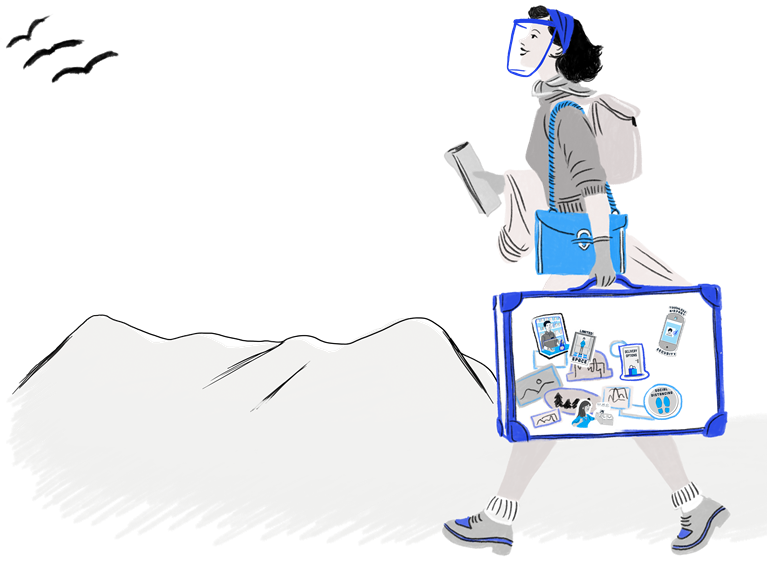
Picture yourself in your favorite vacation spot. Perhaps you’re lying on a beach towel, hiking up a mountain, or skiing down one. Your journey there was different, but the new measures gave you more control and flexibility while ensuring your safety.
The companies that thrive after this crisis will likely be those that work with travelers and employees to cocreate distinctive solutions in a rapid and agile manner, that find new ways to enable choice across the customer experience, and that communicate progress in an authentic and transparent way.
No crystal ball can tell us what the future of travel will be, and we will not find the right solutions to today’s fluid situation overnight. This will take time, patience, and probably many attempts as we learn together. But travel companies need to embrace the challenge to come back better.
Melissa Dalrymple is a partner in McKinsey’s Chicago office, where Ryan Mann is an associate partner. Melinda Peters is a consultant in the New Jersey office and Nathan Seitzman is a partner in the Dallas office.
The authors wish to thank Vik Krishnan, Ellen Scully, Nate Lagacy, Kyle Snyder, Andrew Leon Hanna, Anna Obed, and Luis Diego Cabezas for their contributions to this article.
Explore a career with us
Related articles.

Hospitality and COVID-19: How long until ‘no vacancy’ for US hotels?
A new approach in tracking travel demand
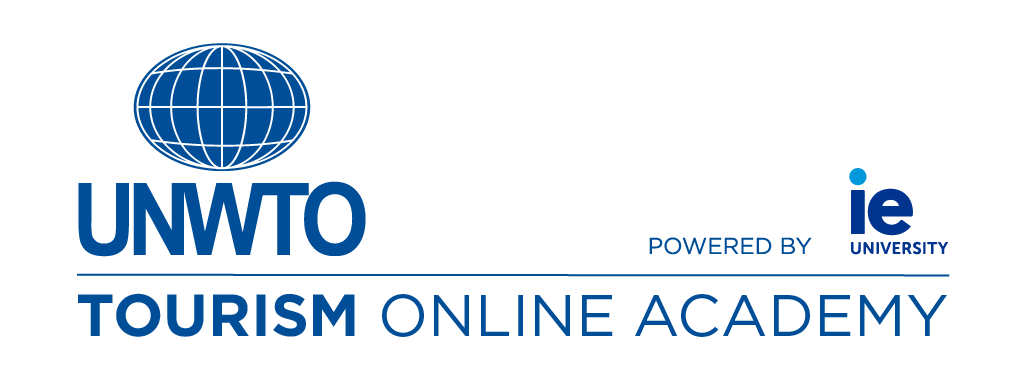
THE EVOLUTION OF THE TOURISM SECTOR
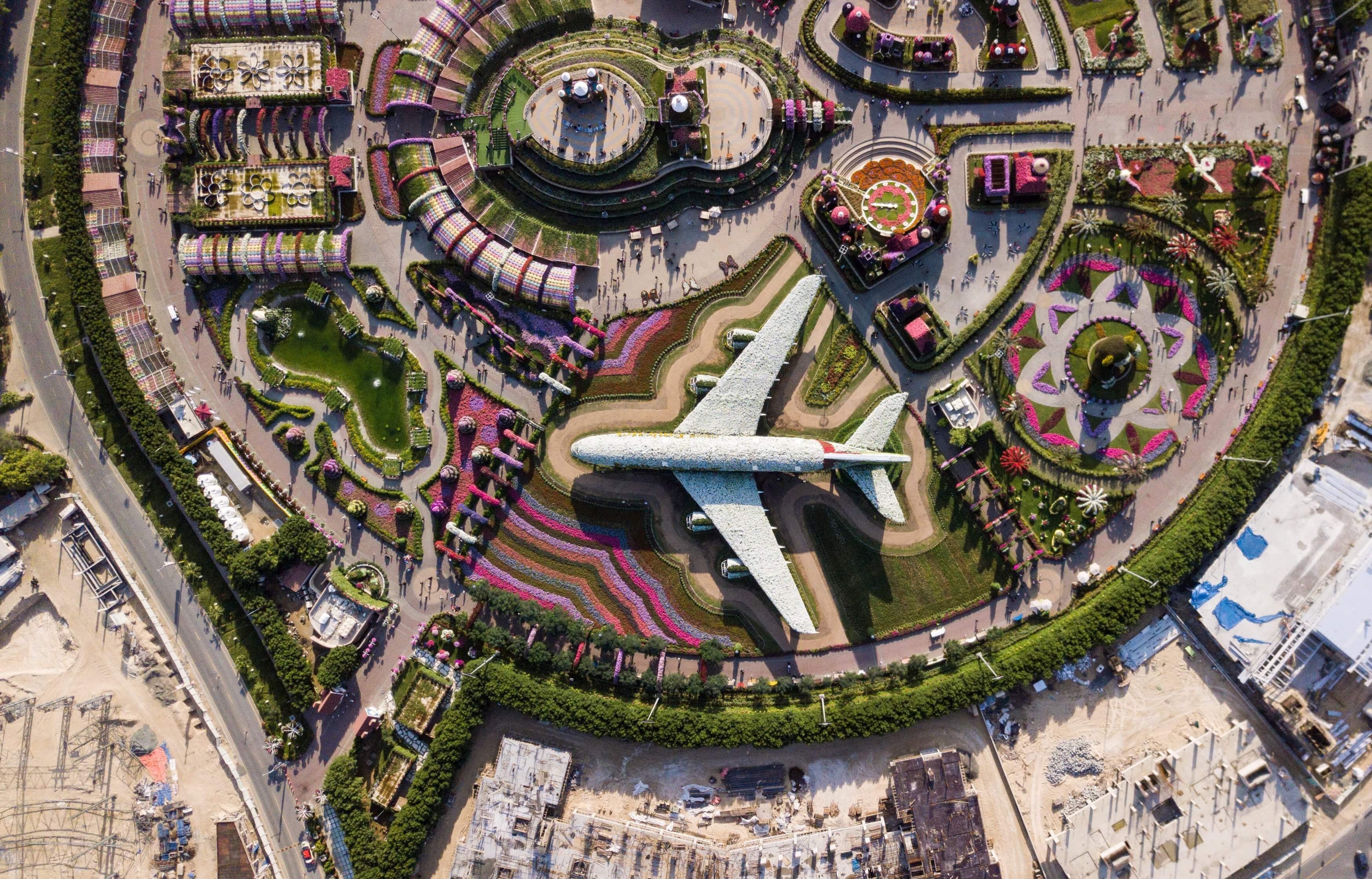
25 Aug THE EVOLUTION OF THE TOURISM SECTOR
Tourism has evolved hand-in-hand with changing technology, communications and marketing practices.
While in 1950 the world welcomed 25 million international tourists, according to UNWTO data, by 2019 this had increased to 1.5 billion.
The massive increase in the number of people joining the middle classes globally, along with the falling cost of travelling, the emergence of low-cost airlines, and the rise of the internet and its impact on both social interactions and business models, are among the main factors behind the increase in tourist numbers.
- Thanks to the internet, almost everyone can easily buy a plane or train ticket, often at a low cost.
- The creation of new companies and market niches help consumers access travel in a more efficient and simple way, eliminating third parties. Travel agencies are being left in the background because of this.
- New accommodation and transportation platforms have also increased levels of competition and lowered costs for tourists.
So, what was seen as a luxury available to just a small few in 1950 had by 2020 become an achievable aspiration for a large number of people in every part of the world.
While the situation for tourism in 2021 is characterized by its response to the COVID-19 pandemic, the sector continues to adapt in order to restart and grow back stronger and more sustainably.
- Search Please fill out this field.
- Manage Your Subscription
- Give a Gift Subscription
- Newsletters
- Sweepstakes
- Travel Tips
What Travel Looked Like Through the Decades
:max_bytes(150000):strip_icc():format(webp)/maya-kachroo-levine-author-pic-1-2000-1209fcfd315444719a7906644a920183.jpg)
Getting from point A to point B has not always been as easy as online booking, Global Entry , and Uber. It was a surprisingly recent event when the average American traded in the old horse-and-carriage look for a car, plane, or even private jet .
What was it like to travel at the turn of the century? If you were heading out for a trans-Atlantic trip at the very beginning of the 20th century, there was one option: boat. Travelers planning a cross-country trip had something akin to options: carriage, car (for those who could afford one), rail, or electric trolley lines — especially as people moved from rural areas to cities.
At the beginning of the 1900s, leisure travel in general was something experienced exclusively by the wealthy and elite population. In the early-to-mid-20th century, trains were steadily a popular way to get around, as were cars. The debut regional airlines welcomed their first passengers in the 1920s, but the airline business didn't see its boom until several decades later. During the '50s, a huge portion of the American population purchased a set of wheels, giving them the opportunity to hit the open road and live the American dream.
Come 1960, airports had expanded globally to provide both international and domestic flights to passengers. Air travel became a luxury industry, and a transcontinental trip soon became nothing but a short journey.
So, what's next? The leisure travel industry has quite a legacy to fulfill — fancy a trip up to Mars , anyone? Here, we've outlined how travel (and specifically, transportation) has evolved over every decade of the 20th and 21st centuries.
The 1900s was all about that horse-and-carriage travel life. Horse-drawn carriages were the most popular mode of transport, as it was before cars came onto the scene. In fact, roadways were not plentiful in the 1900s, so most travelers would follow the waterways (primarily rivers) to reach their destinations. The 1900s is the last decade before the canals, roads, and railway plans really took hold in the U.S., and as such, it represents a much slower and antiquated form of travel than the traditions we associate with the rest of the 20th century.
Cross-continental travel became more prevalent in the 1910s as ocean liners surged in popularity. In the '10s, sailing via steam ship was the only way to get to Europe. The most famous ocean liner of this decade, of course, was the Titanic. The largest ship in service at the time of its 1912 sailing, the Titanic departed Southampton, England on April 10 (for its maiden voyage) and was due to arrive in New York City on April 17. At 11:40 p.m. on the evening of April 14, it collided with an iceberg and sank beneath the North Atlantic three hours later. Still, when the Titanic was constructed, it was the largest human-made moving object on the planet and the pinnacle of '10s travel.
The roaring '20s really opened our eyes up to the romance and excitement of travel. Railroads in the U.S. were expanded in World War II, and travelers were encouraged to hop on the train to visit out-of-state resorts. It was also a decade of prosperity and economic growth, and the first time middle-class families could afford one of the most crucial travel luxuries: a car. In Europe, luxury trains were having a '20s moment coming off the design glamour of La Belle Epoque, even though high-end train travel dates back to the mid-1800s when George Pullman introduced the concept of private train cars.
Finally, ocean liners bounced back after the challenges of 1912 with such popularity that the Suez Canal had to be expanded. Most notably, travelers would cruise to destinations like Jamaica and the Bahamas.
Cue "Jet Airliner" because we've made it to the '30s, which is when planes showed up on the mainstream travel scene. While the airplane was invented in 1903 by the Wright brothers, and commercial air travel was possible in the '20s, flying was quite a cramped, turbulent experience, and reserved only for the richest members of society. Flying in the 1930s (while still only for elite, business travelers) was slightly more comfortable. Flight cabins got bigger — and seats were plush, sometimes resembling living room furniture.
In 1935, the invention of the Douglas DC-3 changed the game — it was a commercial airliner that was larger, more comfortable, and faster than anything travelers had seen previously. Use of the Douglas DC-3 was picked up by Delta, TWA, American, and United. The '30s was also the first decade that saw trans-Atlantic flights. Pan American Airways led the charge on flying passengers across the Atlantic, beginning commercial flights across the pond in 1939.
1940s & 1950s
Road trip heyday was in full swing in the '40s, as cars got better and better. From convertibles to well-made family station wagons, cars were getting bigger, higher-tech, and more luxurious. Increased comfort in the car allowed for longer road trips, so it was only fitting that the 1950s brought a major expansion in U.S. highway opportunities.
The 1950s brought the Interstate system, introduced by President Eisenhower. Prior to the origination of the "I" routes, road trippers could take only the Lincoln Highway across the country (it ran all the way from NYC to San Francisco). But the Lincoln Highway wasn't exactly a smooth ride — parts of it were unpaved — and that's one of the reasons the Interstate system came to be. President Eisenhower felt great pressure from his constituents to improve the roadways, and he obliged in the '50s, paving the way for smoother road trips and commutes.
The '60s is the Concorde plane era. Enthusiasm for supersonic flight surged in the '60s when France and Britain banded together and announced that they would attempt to make the first supersonic aircraft, which they called Concorde. The Concorde was iconic because of what it represented, forging a path into the future of aviation with supersonic capabilities. France and Britain began building a supersonic jetliner in 1962, it was presented to the public in 1967, and it took its maiden voyage in 1969. However, because of noise complaints from the public, enthusiasm for the Concorde was quickly curbed. Only 20 were made, and only 14 were used for commercial airline purposes on Air France and British Airways. While they were retired in 2003, there is still fervent interest in supersonic jets nearly 20 years later.
Amtrak incorporated in 1971 and much of this decade was spent solidifying its brand and its place within American travel. Amtrak initially serviced 43 states (and Washington D.C.) with 21 routes. In the early '70s, Amtrak established railway stations and expanded to Canada. The Amtrak was meant to dissuade car usage, especially when commuting. But it wasn't until 1975, when Amtrak introduced a fleet of Pullman-Standard Company Superliner cars, that it was regarded as a long-distance travel option. The 235 new cars — which cost $313 million — featured overnight cabins, and dining and lounge cars.
The '80s are when long-distance travel via flight unequivocally became the norm. While the '60s and '70s saw the friendly skies become mainstream, to a certain extent, there was still a portion of the population that saw it as a risk or a luxury to be a high-flyer. Jetsetting became commonplace later than you might think, but by the '80s, it was the long-haul go-to mode of transportation.
1990s & 2000s
Plans for getting hybrid vehicles on the road began to take shape in the '90s. The Toyota Prius (a gas-electric hybrid) was introduced to the streets of Japan in 1997 and took hold outside Japan in 2001. Toyota had sold 1 million Priuses around the world by 2007. The hybrid trend that we saw from '97 to '07 paved the way for the success of Teslas, chargeable BMWs, and the electric car adoption we've now seen around the world. It's been impactful not only for the road trippers but for the average American commuter.
If we're still cueing songs up here, let's go ahead and throw on "Lifestyles of the Rich and Famous," because the 2010s are when air travel became positively over-the-top. Qatar Airways rolled out their lavish Qsuites in 2017. Business class-only airlines like La Compagnie (founded in 2013) showed up on the scene. The '10s taught the luxury traveler that private jets weren't the only way to fly in exceptional style.
Of course, we can't really say what the 2020 transportation fixation will be — but the stage has certainly been set for this to be the decade of commercial space travel. With Elon Musk building an elaborate SpaceX rocket ship and making big plans to venture to Mars, and of course, the world's first space hotel set to open in 2027 , it certainly seems like commercialized space travel is where we're headed next.
:max_bytes(150000):strip_icc():format(webp)/Ellie-Nan-Storck-00d7064c4ef24a22a8900f0416c31833.jpeg)
Related Articles
The Impact Of Technology On Travel And Tourism: A Closer Look
- Last updated May 09, 2024
- Difficulty Intemediate
- Category Travel

Over the past few decades, technology has revolutionized almost every aspect of our lives. From the way we communicate to the way we shop, technology has become an integral part of our daily routines. One industry that has been significantly impacted by this digital revolution is travel and tourism. The rise of technology has not only changed the way we plan and book our trips, but it has also transformed the way we experience and share our travel adventures. In this article, we will take a closer look at the impact of technology on travel and tourism, exploring the ways in which it has shaped our travel habits, enhanced our travel experiences, and revolutionized the tourism industry as a whole.
What You'll Learn
Evolution of booking systems and online travel agencies, emergence of mobile applications and travel assistance tools, impact of social media and online reviews on travel decisions, integration of technology in transportation and accommodation options.

The evolution of technology has greatly impacted the travel and tourism industry. One area that has experienced significant changes is the booking systems and the rise of online travel agencies (OTAs).
Gone are the days when travelers had to visit a physical travel agency or make phone calls to book their trips. With the advent of the internet and advancements in technology, the process of booking travel has become much more convenient and accessible.
Booking systems, also known as Global Distribution Systems (GDS), have played a crucial role in this evolution. Initially, these systems were used by airlines to manage their flight inventory. However, over time, they expanded to include other travel services such as hotel accommodations, car rentals, and even tour packages.
The first major milestone in the evolution of booking systems was the introduction of Computer Reservation Systems (CRS) in the 1960s. This allowed travel agents to access real-time flight information and make bookings for their clients. It revolutionized the industry by automating the previously manual process of making reservations.
The next major development came in the 1990s with the rise of online travel agencies. These online platforms, such as Expedia and Booking.com, allowed travelers to search and book flights, hotels, and other travel services directly through their websites. This shift gave consumers the power to access a wide range of travel options at their fingertips, without the need for a travel agent.
The emergence of OTAs marked a turning point in the travel and tourism industry. The ability to compare prices, read reviews, and view photos and descriptions of travel options online empowered travelers to make informed decisions. This increased transparency and competition in the market, leading to lower prices and better deals for consumers.
As technology continued to advance, so did the capabilities of booking systems and OTAs. Mobile applications were developed, allowing travelers to book and manage their trips on the go. This gave rise to the concept of "last-minute" bookings, where travelers could find great deals on flights and accommodations just hours before their departure.
Furthermore, the integration of artificial intelligence (AI) and machine learning technologies has further improved the booking experience. AI-powered chatbots, for example, can assist travelers in finding the right travel options based on their preferences and budget. These chatbots can provide instant responses and recommendations, making the booking process even more efficient and personalized.
In summary, the evolution of booking systems and the rise of online travel agencies have revolutionized the way we book and plan our trips. From the introduction of CRS to the development of OTAs, technology has made travel more accessible, convenient, and affordable. As technology continues to advance, we can expect further improvements in the booking experience, making travel even more seamless and enjoyable for all.
Understanding the Importance of Your Travel Document Number for B2 Visa Applications
You may want to see also
The emergence of mobile applications and travel assistance tools has completely changed the way we travel and experience the world. These technological advancements have made it easier than ever before to plan our trips, book accommodations, find attractions and navigate through unfamiliar places. In this blog post, we will explore how these mobile applications and travel assistance tools have revolutionized the travel and tourism industry.
One of the most significant advantages of mobile applications and travel assistance tools is the ability to plan and book your entire trip with just a few taps on your smartphone. In the past, booking a flight, hotel, and rental car required a lot of time and effort. However, with travel apps like Expedia or Booking.com, you can now search and compare prices from different airlines and hotels, choose the best options that fit your budget, and make your reservations instantly. This not only saves you time but also ensures that you get the best deals available.
Moreover, these travel apps also provide you with valuable information about your destination. You can discover popular attractions, read reviews from previous travelers, and even purchase tickets in advance. This allows you to plan your itinerary in advance and ensures that you make the most of your time at the destination. Additionally, many of these apps provide offline maps and navigation tools, which is extremely beneficial when you are in a foreign country and don't have access to data or Wi-Fi. These tools help you navigate through unfamiliar places, find the best routes, and avoid getting lost.
Another area where mobile applications and travel assistance tools have had a significant impact is in providing real-time updates and assistance during your trip. Whether it's flight delays, gate changes, or hotel check-in information, these apps keep you informed and ensure that you have a hassle-free travel experience. They also provide you with recommendations for restaurants, shopping, and entertainment options near your location, making it easier to explore and discover the local culture.
Furthermore, travel apps and assistance tools also assist you in managing your expenses during your trip. With features like expense tracking and currency conversion, you can keep track of your spending and ensure that you stay within your budget. Some apps even provide you with personalized trip itineraries and recommendations based on your preferences and previous travel history, making your trip more tailored to your interests.
Overall, the emergence of mobile applications and travel assistance tools has made travel planning and exploring new destinations easier and more convenient than ever before. These apps provide you with all the information and tools you need at your fingertips, saving you time and effort. So, whether you're planning a weekend getaway or a month-long adventure, make sure to leverage these technological advancements to enhance your travel experience.
Can I Travel With a Valid Visa Using My Old Name?
Social media and online reviews have revolutionized the way people make travel decisions. In the past, travelers relied heavily on travel agencies and guidebooks for information about destinations and accommodations. However, with the rise of social media and online review platforms, people can now make more informed decisions based on the experiences and opinions of others.
One of the biggest impacts of social media on travel decisions is the ability to share real-time experiences with friends and followers. Whether it's posting photos of a beautiful beach or writing a review about a hotel, travelers can instantly share their experiences with their social media networks. This allows people to get a glimpse into what a destination or accommodation is really like, as opposed to relying solely on promotional advertisements.
Online review platforms, such as TripAdvisor and Yelp, have also played a significant role in shaping travel decisions. These platforms provide a space for travelers to share their experiences, rate accommodations, and leave detailed reviews. Potential travelers can read these reviews to get a sense of the pros and cons of a particular hotel or attraction. This transparent and honest feedback can be invaluable in making informed decisions.
Another important impact of social media and online reviews is the democratization of travel knowledge. In the past, travel advice was often limited to a select few experts or professionals. Now, anyone with an internet connection can contribute their opinions and experiences. This means that travelers have access to a much wider range of perspectives and recommendations, making it easier to find the best options for their needs.
Social media and online reviews have also put pressure on businesses to maintain high standards. With the ability for travelers to instantly share their negative experiences, hotels and attractions are incentivized to provide excellent service and quality. This can lead to an overall improvement in the tourism industry as businesses strive to meet the expectations and demands of their customers.
In conclusion, social media and online reviews have had a profound impact on travel decisions. Travelers now have the ability to share and access real-time experiences, read honest feedback from other travelers, and benefit from a wide range of recommendations. This has not only changed the way people make travel decisions but has also influenced businesses to prioritize customer satisfaction. As social media platforms and online review platforms continue to evolve, their impact on the travel industry will likely continue to grow.
Is it Possible to Travel to Germany with a US Visa?
Technology has revolutionized the travel and tourism industry in many ways, and one of the most impactful areas is the integration of technology in transportation and accommodation options. In the past, travelers had limited choices when it came to booking flights, trains, or hotels. They had to rely on travel agents or visit multiple websites to compare prices and make reservations. However, thanks to advancements in technology, travelers now have access to a wide range of options with just a few clicks.
The integration of technology has made it easier for travelers to find and book various modes of transportation such as flights, trains, buses, and even rideshares. Online travel agencies and aggregators have become popular platforms where travelers can compare prices, check availability, and make reservations in one place. These platforms allow users to search for the best deals and select the most convenient options based on their preferences and budget.
Moreover, technology has also led to the rise of sharing economy platforms, such as Uber and Airbnb, which have transformed the way people find and book accommodation. These platforms connect travelers with individuals who can offer transportation or accommodation services at a reasonable cost. This not only provides travelers with affordable options but also allows them to have a more personalized and unique travel experience.
In addition to finding and booking transportation and accommodation options, technology has also improved the overall travel experience. For example, travelers can now use mobile applications and online check-in services to streamline the process of getting to their destination. Airlines and hotels have developed mobile apps that allow travelers to check flight statuses, track their luggage, and access their hotel room keys, all from their smartphone.
Furthermore, technology has enhanced the safety and security aspects of travel. For instance, the integration of technology in transportation has led to the development of advanced navigation systems and driver-assistance technologies that improve road safety. Additionally, online payment systems and secure booking platforms have made it safer for travelers to make transactions and share sensitive information.
Overall, the integration of technology in transportation and accommodation options has transformed the way people travel. Travelers now have more choices and convenience when it comes to finding and booking flights, trains, hotels, and other forms of transportation. The rise of sharing economy platforms has also provided travelers with affordable and unique accommodation options. Moreover, technology has improved the overall travel experience by streamlining processes and enhancing safety and security. As technology continues to advance, it will undoubtedly have a significant impact on the future of travel and tourism.
Can H4 Visa Holders Travel Outside the US?
Frequently asked questions.

- Elani Piper Author Editor Reviewer

- Pop Panupong Author Reviewer Traveller
It is awesome. Thank you for your feedback!
We are sorry. Plesae let us know what went wrong?
We will update our content. Thank you for your feedback!
Leave a comment
Travel photos, related posts.
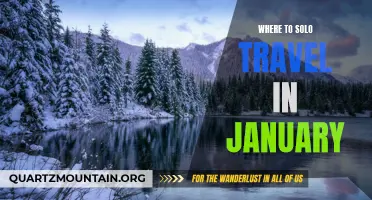
Best Destinations for Solo Travel in January
- May 08, 2024

Exploring London's Charm: Navigating with a Schengen Visa
- Mar 21, 2024

Exploring Belize: Discovering the Possibilities of Traveling with a US Visa
- Mar 19, 2024

When Will I Be Able to Travel to Florida from New Jersey?
- May 14, 2024

Exploring Target's Payment Options: Are Traveler's Checks Accepted?
- May 11, 2024

The Ultimate Guide to Keeping Wrinkles Away on Clothes When Traveling
Understanding the Role of Stakeholders in Sustainability of Travel and Tourism Industry: Future Prospects
- Living reference work entry
- First Online: 12 December 2023
- Cite this living reference work entry

- Anukrati Sharma 2 &
- Shruti Arora 2
Part of the book series: Springer International Handbooks of Education ((SIHE))
13 Accesses
Without the support and dedication of stakeholders, success might seem improbable for any business or industry. Working together, stakeholders can make sure that travel and tourism has a positive impact on the economy, environment, and society. Properly involving stakeholders in the tourism industry could also result in better decision-making, increased cooperation, and a greater understanding of the industry’s effects. All parties involved in the planning of sustainable travel and tourism must be included, especially the local community. Despite not often having a direct connection to the project or even the industry, stakeholders are nonetheless influenced by the results. Future generations are frequently regarded as tourism stakeholders, including both visitors and residents. In order to maintain sustainability, the chapter explores the role of stakeholders in the travel and tourism sector. The goal of this study is to better understand how stakeholders’ perspectives might affect business decisions on the development of sustainable tourism initiatives at diverse tourist destinations. This research will focus on the role of stakeholders in the sustainability of the travel and tourism sector and future prospects through a review of the literature from the previous 15 years.
According to the authors, locals or the host community have a greater responsibility to preserve the local culture and to sustain it for the future of the region. This is based on a review of the literature that demonstrates how stakeholders, including national and local government, the host community, individual shops, professionals working in tourism, tourism educational centers, tourists, and destination management organizations, all enhance or limit progress in travel and tourism. A few other issues were also noted during the study, such as poor education, inadequate financing and publicity, and rapid changes in infrastructure and technology.
This is a preview of subscription content, log in via an institution to check access.
Access this chapter
Institutional subscriptions
Aas, C., Ladkin, A., & Fletcher, J. (2005). Stakeholder collaboration and heritage management. Annals of Tourism Research, 32 (1), 28–48. https://doi.org/10.1016/j.annals.2004.04.005
Article Google Scholar
Ali, F., Hussain, K., Nair, V., & Nair, P. K. (2017). Stakeholders’ perceptions & attitudes towards tourism development in a mature destination. Journal of Oral Science, 65 , 173–186.
Google Scholar
Amerta, I. M. (2017). The role of tourism stakeholders at Jasri tourism village development, Karangasem regency. International Journal of Social Sciences and Humanities (IJSSH), 1 (2), 20–28.
Andersson, T. D., & Getz, D. (2008). Stakeholder management strategies of festivals. Journal of Convention and Event Tourism, 9 (3), 199–220. https://doi.org/10.1080/15470140802323801
Becker, C. U. (2012). Sustainability ethics and sustainability research. https://doi.org/10.1007/978-94-007-2285-9 . Retrieved from https://jyu.finna.fi/PrimoRecord/pci.springer_s978-94-007-2285-9_272111
Boachie, W. K. (2012). Assessing sustainable development in the mining industry in Ghana: A question of corporate perspective. Journal of Economic and Sustainable Development, 3 (10), 113–119.
Bornhorst, T., Brent Ritchie, J. R., & Sheehan, L. (2010). Determinants of tourism success for DMOs & destinations: An empirical examination of stakeholders’ perspectives. Tourism Management, 31 (5), 572–589.
Bramwell, B., & Sharman, A. (1999). Collaboration in local tourism policymaking. Annals of Tourism Research, 26 (2), 392–415. https://doi.org/10.1016/S0160-7383(98)00105-4
Brown, D., Spillman, K., Lee, M.-Y., & Lu, Y. (2014). Factors influencing small tourism business performance: The case of Central Kentucky, United States. Journal of Hospitality Marketing & Management, 23 (7), 768–789. https://doi.org/10.1080/19368623.2014.883293
Butler, R., Hall, C., & Jenkins, J. (1999). Tourism and recreation in rural areas . Wiley.
Carroll, A. B., Brown, J. A., & Buchholtz, A. K. (2018). Business & society: Ethics, sustainability, and stakeholder management . Cengage.
Christie, I., Fernandes, E., Messerli, H., & Twining-Ward, L. (2014). Tourism in Africa: Harnessing tourism for growth and improved livelihoods . World Bank.
Crane, A., & Ruebottom, T. (2011). Stakeholder theory and social identity rethinking stakeholder identification. Journal of Business Ethics, 102 , 77–87.
Ford, R. C., Wang, Y., & Vestal, A. (2012). Power asymmetries in tourism distribution networks. Annals of Tourism Research., 39 (2), 755–779.
Freeman, E. (1984). Strategic management: A stakeholder approach . Pitman.
Freeman, R. E. (2010). Strategic management: A stakeholder approach . Cambridge University Press.
Book Google Scholar
Freeman, R. E., Harrison, J. S., & Zyglidopoulos, S. (2018). Stakeholder theory: Concepts and strategies . Cambridge University Press.
Getz, D. & Timur S. (2005). Stakeholder involvement in sustainable tourism: Balancing the voices. In Global tourism (pp. 230–247). Elsevier. https://doi.org/10.1016/b978-0-7506-7789-9.50019-4
Goeldner, R., & Ritchie, B. (2005). Tourism: Principles, practices, philosophies (9th ed.). Wiley.
Hall, C. M. (2008). Tourism planning: Policies, processes and relationships (2nd ed.). Pearson Education.
Hall, D., & Richards, G. (2000). Tourism and sustainable community development (pp. 20–35). https://doi.org/10.4324/9780203464915
Hamid, M. A., Isa, S. M., & Kiumarsi, S. (2020). Sustainable tourism practices and business performance from the tour operators’ perspectives. Anatolia, 32 , 1–10. https://doi.org/10.1080/13032917.2020.1830135
Hartley, N., & Wood, C. (2005). Public participation in environmental impact assessment – Implementing the Aarhus convention. Environmental Impact Assessment Review, 25 , 319–340.
Herlangga, E. R., & Basuni, S. (2019). Stakeholder management of Kawasan konservasi mangrove dan bekantan in Tarakan city. Jurnal Manajemen Hutan Tropika, 23 (5), 146–153. https://doi.org/10.7226/jtfm.25.3.146
Holden, A. (2013). Tourism, poverty, and development . Routledge.
Hopwood, B., Mellor, M., & O’Brien, G. (2005). Sustainable development: Mapping different approaches. Sustainable Development, 13 , 38–52.
Iazzi, A., Pizzi, S., Iaia, L., & Turco, M. (2020). Communicating the stakeholder engagement process: A cross-country analysis in the tourism sector. Corporate Social Responsibility and Environmental Management, 27 (4), 1642–1652.
IBEF Nov. (2022). Tourism and hospitality industry report. Retrieved from https://www.ibef.org/industry/indian-tourism-and-hospitality-industry-analysis-presentation#:~:text=In%20India%2C%20the%20industry's%20direct,US%24%2028.9%20billion%20in%202018
Inskeep, E. (1991). Tourism planning: An integrated and sustainable development approach . Wiley.
Jalim, J. (2018, May 29). What are the types of tourism? Retrieved from https://www.quora.com/What-are-the-types-of-tourism
Jamal, T. B., & Getz, D. (1995). Collaboration theory and community tourism planning. Annals of Tourism Research, 22 (1), 186–204. https://doi.org/10.1016/0160-7383(94)00067-3
Jovanović, S., & Ivana, I. L. I. Ć. (2016). Infrastructure as important determinant of tourism development in the countries of Southeast Europe. Eco Forum Journal, 5 (1), 288–294.
Kenawy, E., Osman, T., & Alshamndy, A. (2017). What are the main challenges impeding implementation of the spatial plans in Egypt using ecotourism development as an example? Social Sciences, 6 (3), 75. https://doi.org/10.3390/socsci6030075
Kuvan, Y., & Akan, P. (2012). Conflict and agreement in stakeholder attitudes: Residents’ and hotel managers’ views of tourism impacts and forest-related tourism development. Journal of Sustainable Tourism, 20 (4), 571–584. https://doi.org/10.1080/09669582.2011.617824
Landorf, C. (2009). Managing for sustainable tourism: A review of six cultural world heritage sites. Journal of Sustainable Tourism, 17 (1), 53–70.
Lim, J. S., & Greenwood, C. A. (2017). Communicating corporate social responsibility (CSR): Stakeholder responsiveness and engagement strategy to achieve CSR goals. Public Relations Review, 43 (4), 768–776.
Link BC. (2008). Transforming communities through tourism: A handbook for community tourism champions . Retrieved from http://linkbc.ca/siteFiles/85/files/TCTT.pdf
Ljungholm, D. (2014). The process of collaborative governing. Geopolitics, History and International Relations, 6 (2), 105–110. Retrieved from https://jyu.finna.fi/PrimoRecord/pci.proquest1626534498
Majid, Z. (2023, May). Kashmir tourism stakeholders upbeat about future of industry after G20 event. HD Deccan Herald . Retrieved from https://www.deccanherald.com/national/north-and-central/kashmir-tourism-stakeholders-upbeat-about-future-of-industry-after-g20-event-1222078.html . Accessed 25 July 2023.
McComb, E. J., Boyd, S., & Boluk, K. (2017). Stakeholder collaboration: A means to the success of rural tourism destinations? A critical evaluation of the existence of stakeholder collaboration within the Mournes, Northern Ireland. Tourism and Hospitality Research, 17 (3), 286–297. https://doi.org/10.1177/1467358415583738
Mkwizu, K. H. (2020). Digital marketing and tourism: Opportunities for Africa. International Hospitality Review, 34 (1), 5–12.
Moscardo, G. (2011). Exploring social representations of tourism planning: Issues for governance. Journal of Sustainable Tourism, 19 (4–5), 423–436. https://doi.org/10.1080/09669582.2011.558625
Muresan, I. C., Oroian, C. F., Harun, R., Arion, F. H., Porutiu, A., Chiciudean, G. O., Todea, A., & Lile, R. (2016). Local residents’ attitude toward sustainable rural tourism development. Sustainability, 8 , 100.
Musavengane, R., Tantoh, H. B., & Simatele, D. (2019). A comparative analysis of collaborative environmental management of natural resources in Sub-Saharan Africa: A study of Cameroon and South Africa. Journal of Asian and African Studies, 54 (4), 512–532.
Najdeska, K. A., & Rakicevik, G. (2012). Planning of sustainable tourism development. Procedia, Social and Behavioral Sciences, 44 (C), 210–220. https://doi.org/10.1016/j.sbspro.2012.05.022
Nicolaides, A. (2015). Tourism stakeholder theory in practice: Instrumental business grounds, fundamental normative demands or a descriptive application? African Journal of Hospitality, Tourism and Leisure, 4 (2), 1–27.
Nunkoo, R., & Smith, S. L. (2014). Trust, tourism development and planning . Routledge.
Parsa, H. G. (2015). Sustainability, social responsibility, and innovations in tourism and hospitality . Apple Academic Press.
Prell, C., Hubacek, K., Reed, M., Quinn, C., Jin, N., Holden, J., Burt, T., Kirby, M., Sendzimir, J., & Holden, J. (2007). If you have a hammer everything looks like a nail: Traditional versus participatory model building. Interdisciplinary Science Reviews, 32 , 263–282.
Ragas, M. W., & Roberts, M. S. (2009). Communicating corporate social responsibility and brand sincerity: A case study of chipotle Mexican grill’s “food with integrity” program. International Journal of Strategic Communication, 3 (4), 264–280. https://doi.org/10.1080/15531180903218697
Ruhanen, L. (2009). Stakeholder participation in tourism destination planning another case of missing the point? Tourism Recreation Research, 34 (3), 283–294. https://doi.org/10.1080/02508281.2009.11081603
Saidu-Kamara, V. (2016). Strategy for sustainable tourism in developing countries: A qualitative case study on Sierra Leone. Retrieved from https://jyu.finna.fi/PrimoRecord/pci.proquest1836800870
Sautter, E. T., & Leisen, B. (1999). Managing stakeholders, a tourism planning model. Annals of Tourism Research, 26 (2), 312–328. https://doi.org/10.1016/S0160-7383(98)00097-8
Southgate, C., & Sharpley, R. (2002). Tourism, development and the environment. In R. Sharpley & D. J. Telfer (Eds.), Tourism and development: Concepts and issues (pp. 231–262). Channel View Publications.
Swarbrooke, J. (2001). Sustainable tourism management (2nd ed.). CAB International.
Theodoulidis, B., Diaz, D., Cr, F., & Rancati, E. (2017). Exploring corporate social responsibility and financial performance through stakeholder theory in the tourism industries. Tourism Management, 62 , 173–188.
Tkaczynski, A., Rundle-Thiele, S. R., & Beaumont, N. (2009). Segmentation: A tourism stakeholder view. Tourism Management, 30 (2), 169–175. https://doi.org/10.1016/j.tourman.2008.05.010
Tuan, N. (2016). Stakeholder model application in tourism development in Cat Tien, Lam Dong. Journal of Advanced Research in Social Sciences and Humanities, 1 , 73–95.
Turker, N., Alaeddinoglu, F., & Can, A. S. (2016). The role of stakeholders in sustainable tourism development in Safranbolu, Turkey . HLST-Summer July 12–14, 2016, Kyoto, Japan (pp. 415–426). Kyoto.
UNWTO. (2019). International tourism highlights. 2019 Edition . Retrieved from https://www.e-unwto.org/doi/pdf/10.18111/9789284421152
Verdugos, C. M., & Agüera, O. F. (2013). Potencialidades ecoturísticas de la República Dominicana. TURyDES, Revista de Turismo y Desarrollo Local, 6 (14). http://www.eumed.net/rev/turydes/14/ecoturismo.html
Waayers, D., Lee, D., & Newsome, D. (2012). Exploring the nature of stakeholder collaboration: A case study of marine turtle tourism in the Ningaloo region, Western Australia. Current Issues in Tourism, 15 (7), 673–692. https://doi.org/10.1080/13683500.2011.631697
Waligo, V. M., Clarke, J., & Hawkins, R. (2013). Implementing sustainable tourism: A multi-stakeholder involvement management framework. Tourism Management, 36 , 342–353. https://doi.org/10.1016/j.tourman.2012.10.008
Waligo, V. M., Clarke, J., & Hawkins, R. (2014). The ‘leadership–stakeholder involvement capacity’ nexus in stakeholder management. Journal of Business Research, 67 (7), 1342–1352.
World Bank. (2020). Stakeholder engagement plan for emergency projects in response to COVID-19 . https://documents1.worldbank.org/curated/en/820461588370087737/pdf/Stakeholder-Engagement-Plan-SEP-Cote-dIvoire-COVID-19-StrategicPreparedness-and-Response-Project-SPRP-P173813.pdf
World Travel & Tourism Council. (2020). Economic impact of travel and tourism report . Retrieved from https://www.wttc.org/
Yilmaz, B. S., & Gunel, O. D. (2009). The importance of strategic stakeholder management in tourism sector: Research on probable applications. Tourismos, 4 (1), 97–108.
Yiu, L., Saner, R., & Filadoro, M. (2011). Mainstreaming tourism development in the least developed countries: Coherence and complementarity of policy instruments . KUONI.
Yodsuwan, C., & Butcher, K. (2012). Determinants of tourism collaboration member satisfaction in Thailand. Asia Pacific Journal of Tourism Research, 17 (1), 63–80. https://doi.org/10.1080/10941665.2011.613206
Download references
Author information
Authors and affiliations.
Department of Commerce & Management, University of Kota, Kota, Rajasthan, India
Anukrati Sharma & Shruti Arora
You can also search for this author in PubMed Google Scholar
Editor information
Editors and affiliations.
Dept. of Commerce and Management, University of Kota, Kota, Rajasthan, India
Anukrati Sharma
Rights and permissions
Reprints and permissions
Copyright information
© 2024 Springer Nature Singapore Pte Ltd.
About this entry
Cite this entry.
Sharma, A., Arora, S. (2024). Understanding the Role of Stakeholders in Sustainability of Travel and Tourism Industry: Future Prospects. In: Sharma, A. (eds) International Handbook of Skill, Education, Learning, and Research Development in Tourism and Hospitality. Springer International Handbooks of Education. Springer, Singapore. https://doi.org/10.1007/978-981-99-3895-7_44-1
Download citation
DOI : https://doi.org/10.1007/978-981-99-3895-7_44-1
Received : 29 July 2023
Accepted : 22 November 2023
Published : 12 December 2023
Publisher Name : Springer, Singapore
Print ISBN : 978-981-99-3895-7
Online ISBN : 978-981-99-3895-7
eBook Packages : Springer Reference Education Reference Module Humanities and Social Sciences Reference Module Education
- Publish with us
Policies and ethics
- Find a journal
- Track your research

- China Daily PDF
- China Daily E-paper
- Cross-Strait
- Cover Story
- Environment
- Expansion of individual travel scheme welcomed in HK

Allowing more mainland cities to issue individual travel endorsements will boost Hong Kong's tourism sector and contribute to its continued growth and development, tourism and retail industry insiders said.
Residents of eight more cities on the Chinese mainland will be allowed to visit Hong Kong and Macao independently from May 27, according to the National Immigration Administration. They could previously only visit on group tours. Fifty-nine cities are now part of such schemes.
The new cities include Lhasa in the Xizang autonomous region, Lanzhou in Gansu province, Xining in Qinghai province, and Urumqi in the Xinjiang Uygur autonomous region.
From March 6, the administration allowed Xi'an in Shaanxi province and Qingdao in Shandong to issue individual travel endorsements for trips to Hong Kong and Macao.
News of the expansion of eligibility saw the share prices of tourism and gaming companies listed in Hong Kong rise on Monday.
Pang Yiu-kai, chairman of the Hong Kong Tourism Board, welcomed the expansion of the Individual Visit Scheme.
"The central government's inclusion of new cities in the IVS twice in three months reflects its full support and confidence in Hong Kong," he said. "It is also a gift for Hong Kong's tourism industry."
Liza Ng, CEO of Greater Bay Airlines, said she is confident the initiative will boost the development of various industries and Hong Kong's overall economic development.
The Hong Kong Retail Management Association said retailers in the city are determined to seize business opportunities by taking advantage of the central government's expansion of the scheme.
At the annual general meeting of the Hong Kong General Chamber of Commerce on Friday, a chamber spokeswoman said, "Hong Kong's tourism industry can look toward more supportive measures from the central government to overcome the difficulties we are facing now."
- Guangdong helps to connect Bay Area rules
- Criminal investigator embodied value of contributing to society
- Officer's dedication to making communities better remembered
- Designer turns hobby into horse-face skirt business
- Tech breakthrough makes litchi available year-round


Riga renounces Moscow Suburb name in move to shed soviet echoes
O n the eve of Russia's Victory Day, celebrated on May 9, the authorities in Riga have decided to rename the district on the right bank of the Daugava river. The area formerly known as Moscow Suburb, situated in the heart of Latvia's capital, will be changed.
The city's urban development commission stated that these changes are part of the ongoing efforts to eliminate names tied to the Soviet occupation.
The Moscow Suburb in Riga will be renamed
“There will be no more names in Riga glorifying Moscow. There will be no more Moscow Suburb as a name either,” the vice mayor of Riga, Edvards Ratnieks, announced.
The district, known so far as Moscow Suburb (or Maskachka), represents one of the oldest areas of Riga, located along the eastern route towards Moscow. In its vicinity is a notable building reminiscent of a Stalinist palace, the Latvian Academy of Sciences.
The Moscow Suburb will shed its name, which suggests Russian influence, and revert to its historical name, Latgale Suburb.
Another step in Latvia moving away from pro-Russian names
Local television LSM recalled that last year, Latgale Park and Latgale Street had their historical names restored after being named after the Russian capital. Latgale is a historical region located in the eastern part of Latvia.
Following the authorities' decision, the name Latgale Suburb will soon be updated in the national and municipal cartographic and geospatial information systems.
Japan's tourism hits a historic high in March, with over 3 million visitors
Family's flight ordeal: Called 'idiot' for tarmac photo, demands apology
Leptospirosis outbreak in Mauritius linked to rat infestation


IMAGES
VIDEO
COMMENTS
Abstract. The aim of the present book is to provide an overview of tourism evolution in the past, present and future. This book discusses significant travel, tourism and hospitality events while ...
Conclusion. The travel industry has become a combination of DIY internet tools and travel management companies. Transportation innovations such as trains and airplanes have eliminated the problems and lowered travel costs. In short, it has become possible for travelers to go anywhere on the globe in less than 48 hours.
As travel resumes and builds momentum, it's becoming clear that tourism is resilient—there is an enduring desire to travel. Against all odds, international tourism rebounded in 2022: visitor numbers to Europe and the Middle East climbed to around 80 percent of 2019 levels, and the Americas recovered about 65 percent of prepandemic visitors 1 "Tourism set to return to pre-pandemic levels ...
The TTDI is a direct evolution of the long-running Travel and Tourism Competitiveness Index (TTCI), with the change reflecting the index's increased coverage of T&T development concepts, including sustainability and resilience impact on T&T growth and is designed to highlight the sector's role in broader economic and social development as ...
Globally, travel and tourism's direct contribution to gross domectic product (GDP) was approximately 7.7 trillion U.S. dollars in 2022. This was a, not insignificant, 7.6 percent share of the ...
In 2020 alone, the travel and tourism sector lost $4.5 trillion and 62 million jobs globally. But as the world recovers from the impacts of the COVID-19 pandemic, travel and tourism can bounce back as an inclusive, sustainable, and resilient sector. Two experts highlight some of the key transformations in the sector going forward during the ...
In 2020 alone, the travel and tourism industry lost $4.5 trillion in GDP and 62 million jobs - the road to recovery remains long. The World Economic Forum's latest Travel & Tourism Development Indexgives expert insights on how the sector will recover and grow. We asked four business leaders in the sector to reflect on the state of its ...
The aim of the present book is to provide an overview of tourism evolution in the past, present and future. This book discusses significant travel, tourism and hospitality events while referring to tourism-related notions and theories that were developed throughout the history of tourism. Even so, its scope moves beyond a detailed historical ...
The Travel and Tourism industry has grown from this niche beginning to a global, powerful industry, accounting for 10% of the European GDP and 26 million jobs (UNWTO 2019 ). Globally, it sustains twice as many jobs as the financial sector 108 million directly, 292 million indirectly (WTTC 2017 ).
In paragraph 1 we illustrate the main changes brought about by the digital revolution 4.0 in industry, the Web, and tourism. Then, the concepts of tourism 4.0 and smart tourism are compared in Sect. 2. Section 3 illustrates how the consumer experience of digital tourists changes before, during, and after the trip.
12 Emily Thomas, The Meaning of Travel (New York: Oxford University Press, 2020), 40-1. 13 Thomas, Meaning of Travel, 178-87. 14 John Brewer, 'Visiting Vesuvius: Guides, Local Knowledge, Sublime Tourism, and Science, 1760-1890', Journal of Modern History 93, no. 1 (March, 2021), 1-33. 15 For example, Richard Ivan Jobs, Backpack ...
The Journal of Tourism History is the primary venue for peer-reviewed scholarship covering all aspects of the evolution of tourism from earliest times to today's world. Articles address all regions of the globe and often adopt interdisciplinary approaches for exploring the past. The Journal of Tourism History is particularly (though not exclusively) interested in promoting the study of areas ...
Tourism has massively increased in recent decades. Aviation has opened up travel from domestic to international. Before the COVID-19 pandemic, the number of international visits had more than doubled since 2000. Tourism can be important for both the travelers and the people in the countries they visit. For visitors, traveling can increase their ...
After World War II, governments became interested in tourism as an invisible import and as a tool of diplomacy, but prior to this time international travel agencies took the lead in easing the complexities of tourist journeys.The most famous of these agencies was Britain's Thomas Cook and Son organization, whose operations spread from Europe and the Middle East across the globe in the late ...
But the future of the travel industry will depend on more than just travelers' pent-up demand. For some, the romance that travel used to inspire was already wearing thin even before the crisis. We spoke to people across multiple geographies who have traveled in the last two months, 5 and the one constant across their experiences was added ...
Tourism has evolved hand-in-hand with changing technology, communications and marketing practices. While in 1950 the world welcomed 25 million international tourists, according to UNWTO data, by 2019 this had increased to 1.5 billion. The massive increase in the number of people joining the middle classes globally, along with the falling cost ...
They will be more likely to survive and thrive. As an ex-strategy consultant and public speaker on digital and technology trends, and now running venture-backed, travel-tech startup Beyonk, here ...
The transportation, travel, and tourism sector—abbreviated in this chapter to 3T—is making a subtle but dramatic shift. The industry led the way into the digital age with e-tourism, the use of digital media to assist with every transaction in the 3T value chain.E-tourism allows travelers to seek, find, and procure experiences with a few keystrokes or clicks.
Tourism in the economy. In 2017, tourism contributed RUB 3.2 trillion to the economy, equivalent to 3.8% of Russian GVA, and an increase of 21.4% from 2016. The tourism industry in Russia employed 540 500 people in 2017. The number of international visitor arrivals recorded in 2018 was 24.6 million, up 0.7% over 2017.
1900s. The 1900s was all about that horse-and-carriage travel life. Horse-drawn carriages were the most popular mode of transport, as it was before cars came onto the scene. In fact, roadways were ...
In 1845, Cook arranged travel for 165,000 people without the aid of any technology. Consider for a moment, that the ball point pen had not been invented yet, the telegraph was not yet commercially available in the UK until 1846 and the telephone would not be patented for another thirty years. Cook managed all that customer and booking data with ...
The evolution of technology has greatly impacted the travel and tourism industry. One area that has experienced significant changes is the booking systems and the rise of online travel agencies (OTAs). Gone are the days when travelers had to visit a physical travel agency or make phone calls to book their trips.
Over eight million international tourists visited Russia in 2022, about one third of the pre-pandemic figure. The travel and tourism share in the GDP was measured at five percent prior to the ...
Visit Tyler is honored to be a part of the Texas Travel Alliance Tourism Town Hall. If you are interested in the importance of the travel and tourism industry in Tyler and Texas, please register ...
One of the most important economic sectors in many developed nations has been recognized as tourism. The World Travel and Tourism Council reports that in 2018, the travel and tourism industry grew by 3.9%, exceeding the global economy's annual growth rate of 3.2% for the eighth consecutive year.The industry has produced one in five jobs over the last 5 years, making travel and tourism the ...
A mman, May 12 (Petra) -- Samer Majali, Vice Chairman/ CEO of Royal Jordanian, has been named one of Forbes Middle East's Top 100 Travel & Tourism Leaders for 2024. Forbes selects leaders from ...
Allowing more mainland cities to issue individual travel endorsements will boost Hong Kong's tourism sector and contribute to its continued growth and development, tourism and retail industry ...
The city's urban development commission stated that these changes are part of the ongoing efforts to eliminate names tied to the Soviet occupation. The Moscow Suburb in Riga will be renamed